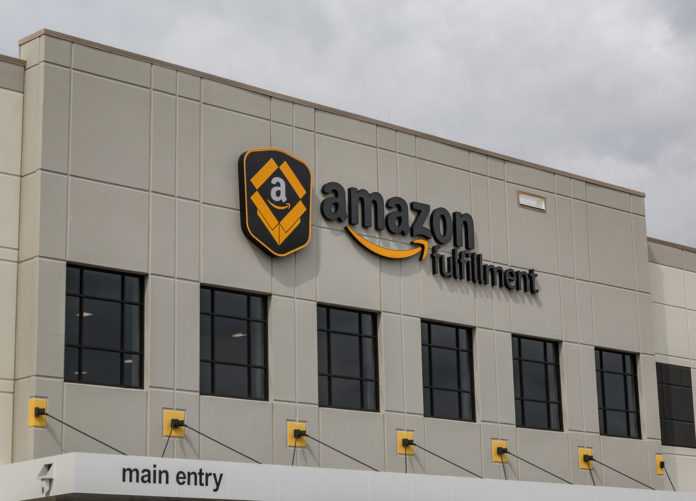Author: Enrique Dans
A little more than a year after its launch, during which it has carried out tests open only to company employees, Amazon has opened its first Amazon Go convenience store in Seattle. Covering some180 square meters, about the size of a gas station store, the outlet sells freshly prepared food and snacks, local products such as cheeses and chocolates, food kits to make meals at home and some Amazon Basics goods such as sticking plasters and batteries.
The company carried out a media launch the day before the public opening, which means that today the news is basically everywhere. A Fast Company article, “Checking out Amazon Go, the first no-checkout convenience store”, along with another in GeekWire, “Amazon Go is finally a go: Sensor-infused store opens to the public Monday, with no checkout lines”, along with the Re|code photo shoot are among the best I’ve seen.
What is Amazon Go? As the presentation video shows, it’s a store stuffed with cameras and sensors of all kinds that allow you to identify yourself when you enter via an app on your smartphone, after which you choose your items, storing them wherever you want, and after you leave, a few moments later you receive a detailed invoice of your purchase, which is charged to your credit card. In short, there are no checkout tills, instead what the company calls “Just walk out technology”. Cameras are located in the ceiling and are black, to avoid customers feeling they are being watched, although they are, at all times.
Think for a moment about the complexity involved here: Amazon Go is a convenience store, where the vast majority of shoppers will be alone, taking what they need and leaving with it, but there is nothing to prevent two or more people shopping together to make a single purchase, or splitting up to finish more quickly, returning items to the right shelf or the wrong shelf, taking two brands to compare them … the range of possibilities is impressive. And the algorithms will analyze them all, understanding at all times what customers are doing. There is no point in seeing this in terms of shoplifting: firstly, the majority of customers are there to buy, secondly, if you’re going to steal stuff, it would probably make more sense go to stores with fewer cameras watching you…
People who have used the store say there is nothing impersonal about the experience: employees are busy preparing food, refilling shelves, helping customers or even asking those buying alcohol for their ID. Everything is controlled by cameras, which are combined with weight sensors on the shelves. Amazon opted not to use facial recognition technology in case customers found it invasive, and instead algorithms try to understand what exactly customers have chosen and how to respond. As the TechCrunch article, “Inside Amazon’s surveillance-powered no-checkout convenience store”, points out, customers are permanently scrutinized by algorithms trying to work out what they are doing: if they have taken something from a shelf, put it back, or if we’ve left. And anybody who doesn’t like the idea of being monitored and assessed by an algorithm will avoid Amazon Go. But if you don’t regard shopping as a particularly private experience, and what you are looking for is convenience, comfort and experimenting with avant-garde technologies, next time you’re in Seattle, stop by 2131 7th Ave, on the corner of 7th and Blanchard, Monday to Friday, 7am to 7pm.
The initial idea was to open the store at the beginning of last year. The delay, according to the company, has not been due to the technology, which it says has been extremely accurate at all times, but to adjustments aimed at improving the client experience, decisions about the range of products, and preparing them. Amazon says it has no plans yet to apply the technology to the 431 Whole Foods supermarkets the company acquired in June 2017, although the Whole Foods experience is not so much about the check out as chatting with fishmongers, butchers and the like. The check out, although it can be differentiated by the friendliness of the cashier or by offering bagging, is not usually considered a decisive element when choosing a supermarket, but instead simply an unavoidable part of the process.
For Amazon, this is another exploration of physical channels by a company born in the online world, but that already has one of its supermarkets less than three miles from a third of American households with annual income of more than $100,000, ready to serve as point of purchase, logistics warehouse or whatever other use it can come up with.
And what about jobs? According to the latest surveys of the US workforce (2014), some 3.5 million people with a salary of $19,310 a year ($9.28 per hour), work as cashiers: not exactly among the most exciting or attractive job in the world. Obviously, anybody working as a cashier in a supermarket would prefer to hold onto their job, but does it really make sense for someone to carry out that alienating task when a set of sensors and cameras can do it more efficiently?
From now on, companies whose establishments have rows of checkouts or ATMs will be asking themselves whether it makes sense to have them staffed by people, or whether it is worth making the investment to replace them. Customer reactions, technological problems, productivity, costs: Amazon Go will usher in a new stage in distribution: senior management at large retail chains will be queuing up in Seattle to experience Amazon’s technology, to understand its potential, to try to deceive it or detect possible problems.
The question is not whether Amazon deploys this technology in Whole Foods: what matters is that an ecommerce giant has stepped into retail at street level, a centuries-old industry, and has revolutionized it by removing one of its key characteristics, cashiers and checkout desks, a process that until now had only been timidly rehearsed through uncomfortable self-checkout processes in which all the work of scanning, bagging and payment was the customer’s responsibility. Once again, Amazon has come up with a better way of doing things, with all that that entails. Soon, there will be no doubt about who leads what…
source: medium.com












